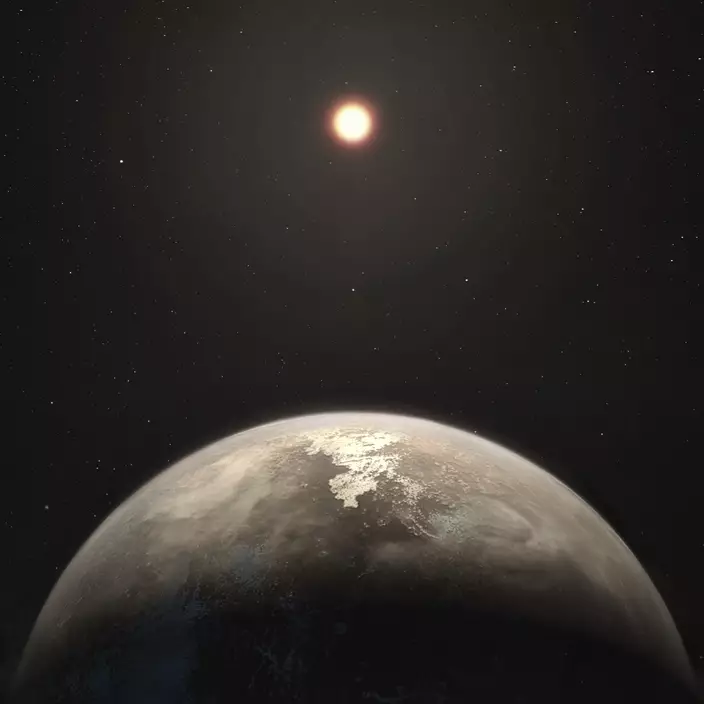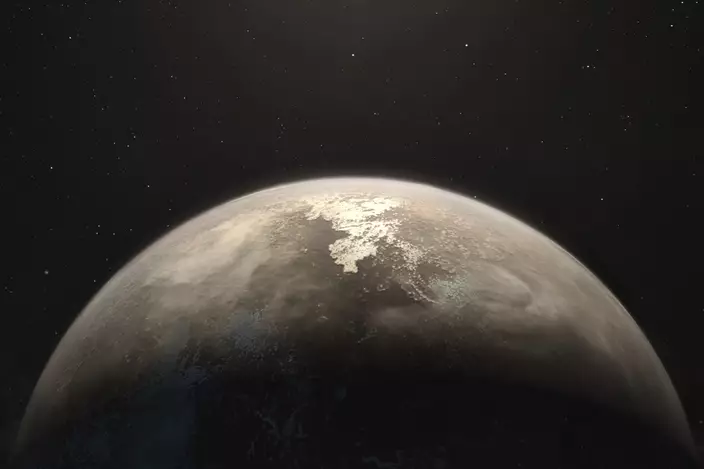Astronomers have discovered a close new world about the size of Earth, where a year lasts just under 10 days.
At a distance of 11 light-years, Ross 128 b is the second-closest planet to be detected yet outside our solar system with surface temperatures potentially similar to ours.

This illustration made available by the European Southern Observatory on Wednesday, Nov. 15, 2017 shows the planet Ross 128 b, foreground, which orbits a red dwarf star, 11 light-years from Earth. (M. Kornmesser/ESO via AP)
Ross 128 b is very near its star, thus the short orbit. But it doesn't get broiled because the red dwarf star is cool. The star is also quiet, meaning no radiation flare-ups. That's encouraging news for seekers of extraterrestrial life. The planet is believed to border the so-called habitable zone.
A team led by the University of Grenoble Alps' Xavier Bonfils made the discovery using La Silla Observatory in Chile. The findings were reported Wednesday.
NASA's exoplanet count stands at 3,550.

This illustration made available by the European Southern Observatory on Wednesday, Nov. 15, 2017 shows the planet Ross 128 b, which orbits a red dwarf star, 11 light-years from Earth. (M. Kornmesser/ESO via AP)


